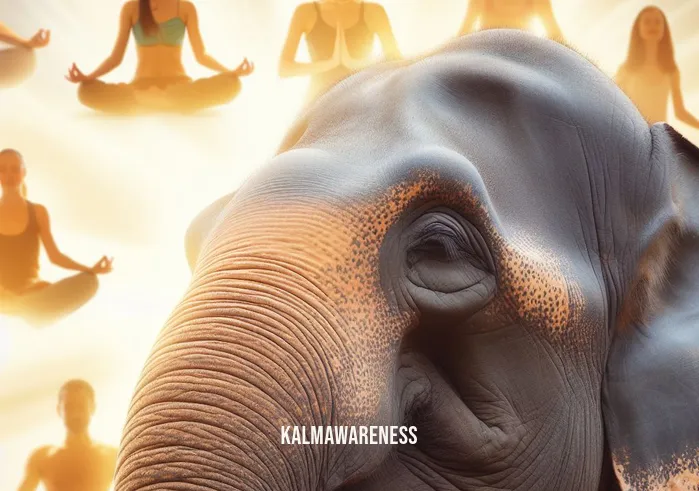The Graceful Goddess Pose in Yoga
In this article, we will explore the enchanting Yoga pose known as the Goddess Pose, a position of grace and strength that resonates with the Yoga cluster and is part of the categories available on our website. The Goddess Pose, also referred to as Utkata Konasana, brings an empowering blend of poise and vitality to your Yoga practice. So let’s dive in and learn more about this captivating pose!
Pose Details
| Description | Explanation |
|---|---|
| Pose Name | Goddess Pose |
| Original Name | Utkata Konasana |
| Difficulty Level | Intermediate |
| Pose Category | Standing Asana |
| Exercise Duration | Beginners: 30 seconds, Advanced: 1 minute |
Overview and Benefits
The Goddess Pose, also known as Utkata Konasana, is a powerful standing asana that embodies the essence of a strong and graceful goddess. The pose has its roots in Hindu mythology, where it represents the divine feminine energy and the fierce goddesses. By practicing this pose, you can tap into your inner strength and unleash your true potential.
Steps to Perform the Goddess Pose:
- Starting Position: Begin by standing tall on your mat with your feet wider than hip-width apart. Turn your toes slightly outward, and keep your heels aligned.
- Bend Your Knees: As you inhale, bend your knees gently, keeping them in line with your toes. Your knees should be at a 90-degree angle, as if you are sitting in an imaginary chair.
- Extend Your Arms: As you settle into the pose, exhale and bring your palms together in front of your heart in a prayer position. Press your elbows against the inner knees, creating a gentle resistance.
- Engage Your Core: Draw your tailbone down towards the floor, engaging your core muscles. This will help you maintain stability and balance throughout the pose.
- Lengthen Your Spine: Elongate your spine, lifting the crown of your head towards the ceiling. Keep your chest open and your shoulders relaxed away from your ears.
- Hold the Pose: Hold the Goddess Pose for the recommended duration, breathing deeply and evenly.
Benefits of the Goddess Pose in Yoga:
- Strengthens the Legs: Utkata Konasana is an excellent workout for your quadriceps, hamstrings, and inner thighs, toning and strengthening these muscle groups.
- Hip Opener: The wide stance in this pose helps to open up the hips, improving flexibility and reducing tension in the hip area.
- Empowering: As you embody the grace and strength of a goddess, this pose instills a sense of empowerment and confidence.
- Stimulates Abdominal Organs: The Goddess Pose engages the core muscles, which helps in stimulating the abdominal organs and improving digestion.
- Energetic Flow: This pose encourages the flow of energy throughout the body, revitalizing the entire system.
Modifications and Variations
Goddess Pose with a Twist
You can enhance the Goddess Pose by incorporating a gentle twist. As you hold the pose, exhale and twist your upper body to the right, bringing your left elbow towards the outside of the right knee. Hold for a few breaths and then repeat on the other side.
Reclining Goddess Pose
For a more restorative variation, try the Reclining Goddess Pose. Lie down on your back, bend your knees, and let them fall open to the sides. The soles of your feet should touch, creating a diamond shape with your legs. This variation is excellent for relaxation and hip opening.
Precautions and Contraindications
While the Goddess Pose is beneficial for most practitioners, individuals with knee or hip injuries should exercise caution or avoid this pose. Pregnant individuals may perform this pose with support, or they can opt for the reclining variation.

The Graceful Goddess Pose in Yoga
In the first part of our journey through the enchanting world of the Goddess Pose, we explored the steps to perform this empowering standing asana and learned about its numerous benefits. Now, in this second part, we’ll delve deeper into the incredible advantages of the Goddess Pose, identify who should avoid this pose, and explore variations suitable for practitioners of different experience levels.
Benefits of the Goddess Pose in Yoga:
The Goddess Pose, or Utkata Konasana, offers a plethora of physical, mental, and emotional benefits that make it a valuable addition to your Yoga practice. Let’s explore these benefits in detail:
- Strengthens the Pelvic Muscles: The wide stance and the engagement of the pelvic region in this pose help strengthen the pelvic floor muscles. This can be especially beneficial for women before, during, and after pregnancy.
- Tones the Core and Glutes: As you hold the Goddess Pose, your core and glute muscles are engaged, leading to improved muscle tone and stability in these areas.
- Opens the Chest and Shoulders: This pose encourages opening of the chest and stretching of the shoulders, countering the effects of hunching and sitting for extended periods.
- Balances Hormones: Practicing the Goddess Pose can help regulate hormones, particularly for women, and alleviate symptoms related to menstruation and menopause.
- Enhances Balance and Focus: Holding this strong and graceful pose requires concentration and balance, sharpening your focus and mind-body coordination.
- Promotes Flexibility: The Goddess Pose stretches the hips, groins, and inner thighs, leading to increased flexibility in these areas.
- Stimulates Blood Flow: The wide-legged stance and grounding nature of the pose encourage better blood circulation throughout the lower body.
- Encourages Emotional Release: The grounding and empowering nature of the Goddess Pose can help release emotional tension and promote a sense of well-being.
Who Should Avoid the Goddess Pose in Yoga:
While the Goddess Pose offers numerous benefits, certain individuals should exercise caution and avoid practicing it under specific circumstances. The following groups of people should consult with a qualified Yoga instructor or healthcare professional before attempting this pose:
- Knee or Hip Injuries: Individuals with knee or hip injuries or conditions like arthritis should be cautious or avoid this pose, as it places stress on these joints.
- Lower Back Issues: Those with lower back pain or disc-related problems should approach the Goddess Pose with care, ensuring proper alignment and modification.
- High Blood Pressure: If you have uncontrolled high blood pressure, it’s advisable to avoid this pose or practice it with the support of a chair.
- Diastasis Recti: For women who have diastasis recti (separation of the abdominal muscles), modifications or alternative poses are recommended to prevent further strain on the midsection.
- Vertigo or Dizziness: If you experience vertigo or dizziness, practice the Goddess Pose near a wall or with the support of a chair to maintain stability.
Variations of the Goddess Pose in Yoga:
The Goddess Pose can be adapted to suit practitioners of different experience levels and accommodate various needs. Here are some variations you can explore:
- Goddess Pose with Shoulder Opener: From the standard Goddess Pose, clasp your hands behind your back, and gently lift your arms, opening your chest and stretching the shoulders. This variation adds an extra element of chest expansion.
- Goddess Pose with Heel Lift: Elevate your heels slightly by placing a folded mat or cushion under them. This variation engages the calf muscles and can be beneficial for those with tight hamstrings.
- Bound Goddess Pose: Begin in the Goddess Pose, then reach your right arm under your right thigh and your left arm over your left thigh. Try to clasp your hands behind your back. Repeat on the other side. This variation enhances shoulder flexibility and adds a binding element to the pose.
- Goddess Pose with Side Stretch: In the Goddess Pose, interlace your fingers and reach your arms overhead. Lean gently to one side, stretching the side of your body. Return to the center and repeat on the other side. This variation provides a wonderful stretch for the side body.

The Graceful Goddess Pose in Yoga
Welcome to the final part of our journey through the captivating world of the Goddess Pose, where we will delve into the rich history and spiritual significance of this empowering asana. We will also provide valuable tips to optimize your Goddess Pose practice, highlight common mistakes to avoid, explore modifications for practitioners with injuries or limited flexibility, and discover complementary poses that complement the essence of the Goddess Pose.
The History of the Goddess Pose in Yoga:
The origins of the Goddess Pose can be traced back to ancient Indian scriptures and myths that celebrate the divine feminine energy. The pose finds its roots in the stories of powerful goddesses and female deities revered for their strength, grace, and wisdom. Throughout history, Yoga practitioners have honored these goddesses through asanas that embody their qualities, and the Goddess Pose is one such tribute.
The Spiritual Significance of the Goddess Pose in Yoga:
Beyond its physical benefits, the Goddess Pose holds deep spiritual significance in Yoga philosophy. As you assume the posture, you embody the divine feminine energy, acknowledging the power and grace within you. The pose symbolizes the balance between Shakti, the creative and nurturing energy, and Shiva, the steady and unwavering consciousness. Practicing the Goddess Pose fosters a connection with your inner goddess, instilling a sense of self-empowerment and spiritual awakening.
Tips for Getting the Most Out of the Goddess Pose in Yoga:
To experience the full potential of the Goddess Pose and deepen your practice, consider these valuable tips:
- Breathe Mindfully: Focus on deep and steady breathing while in the pose. Inhale to draw in strength and energy, and exhale to release tension and negativity.
- Maintain Alignment: Pay attention to your alignment, ensuring that your knees are in line with your toes and your hips are at the same height as your knees.
- Engage Your Core: Activate your core muscles throughout the pose to provide stability and support to your lower back.
- Ground Through Your Feet: Press firmly into your feet to create a stable foundation and a sense of grounding.
- Find Your Edge: Challenge yourself to find the right balance between effort and ease. Push your boundaries gently, but avoid overexertion.
- Cultivate Inner Awareness: Use the Goddess Pose as an opportunity for self-reflection and to connect with your inner strength and wisdom.
Common Mistakes to Avoid:
While practicing the Goddess Pose, be mindful of these common mistakes:
- Collapsing the Chest: Avoid hunching the upper body forward. Instead, open your chest and draw your shoulder blades down your back.
- Knees Extending Beyond Toes: Keep your knees aligned with your toes to protect your knee joints.
- Overarching the Lower Back: Engage your core to prevent excessive arching of the lower back.
- Rounding the Shoulders: Keep your shoulders relaxed and away from your ears.
Modifications for People with Injuries or Limited Flexibility:
For individuals with injuries or limited flexibility, modifications can make the Goddess Pose accessible and safe. Here are some modifications to consider:
- Use Props: Place a block or cushion under your heels to lessen the strain on your ankles and knees.
- Chair Support: Hold onto the back of a chair for added support and balance.
- Narrower Stance: If the wide-legged stance is challenging, bring your feet closer together to reduce strain on the hips.
- Wall Support: Stand with your back against a wall for stability and support.
Poses Complementary to the Goddess Pose in Yoga:
Enhance your Goddess Pose practice with these complementary asanas:
- Warrior II (Virabhadrasana II): A powerful standing pose that strengthens the legs and opens the hips, complementing the Goddess Pose’s grace and stability.
- Wide-Legged Forward Fold (Prasarita Padottanasana): A deep forward fold that stretches the hamstrings and inner thighs, complementing the hip-opening nature of the Goddess Pose.
- Tree Pose (Vrksasana): A balancing pose that encourages focus and concentration, enhancing the meditative aspects of the Goddess Pose.
Conclusion: Embrace Your Inner Goddess
As we conclude our exploration of the Goddess Pose, we hope you’ve gained a deeper understanding of this graceful and empowering asana. Embrace the divine feminine energy within you and embody the strength and wisdom of the goddesses of old. Whether you’re a beginner or an experienced practitioner, the Goddess Pose invites you to celebrate your inner power and grace. As you step off your mat, carry the essence of the Goddess Pose with you, embracing self-empowerment and spiritual connection in every aspect of your life. Namaste. 🙏




